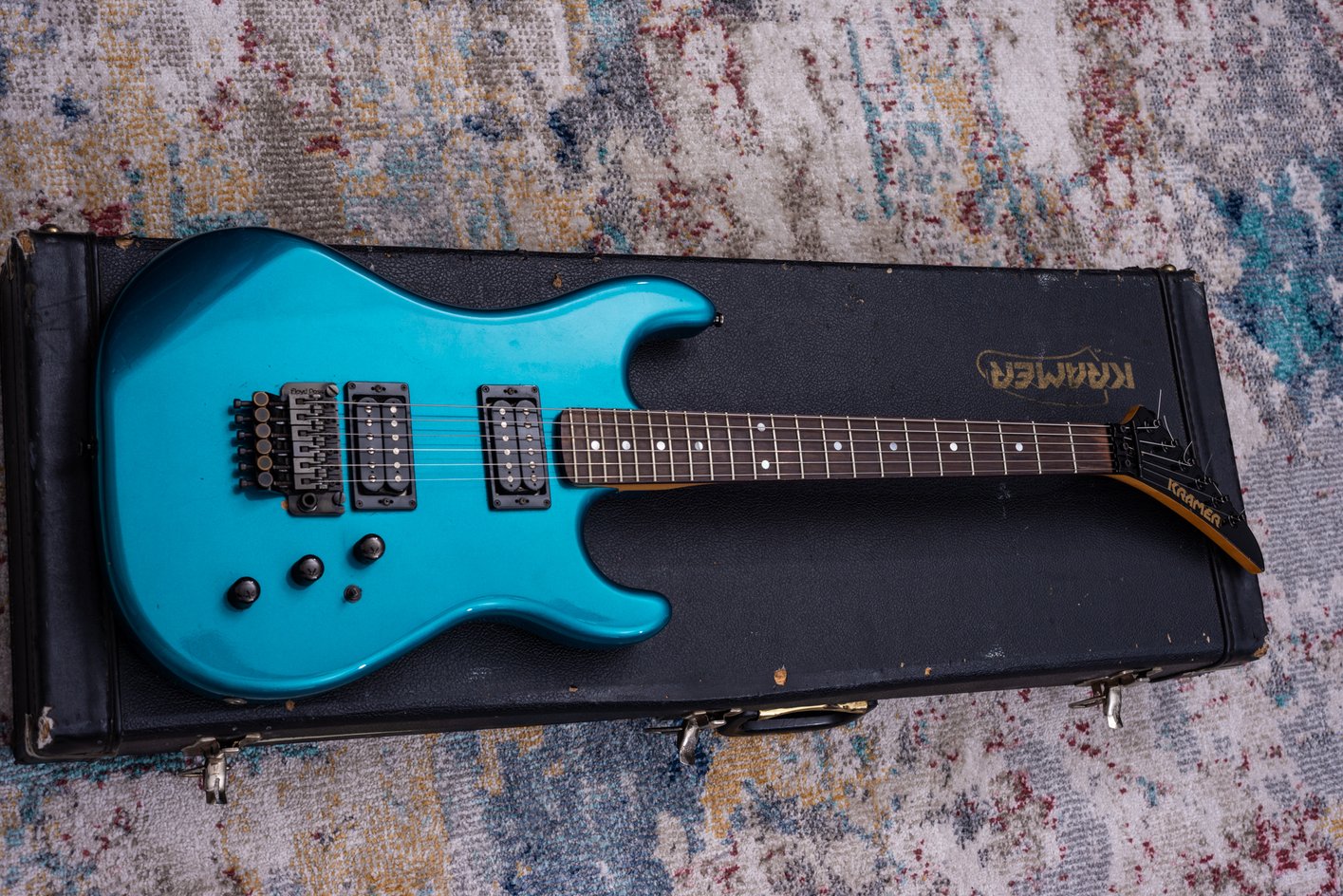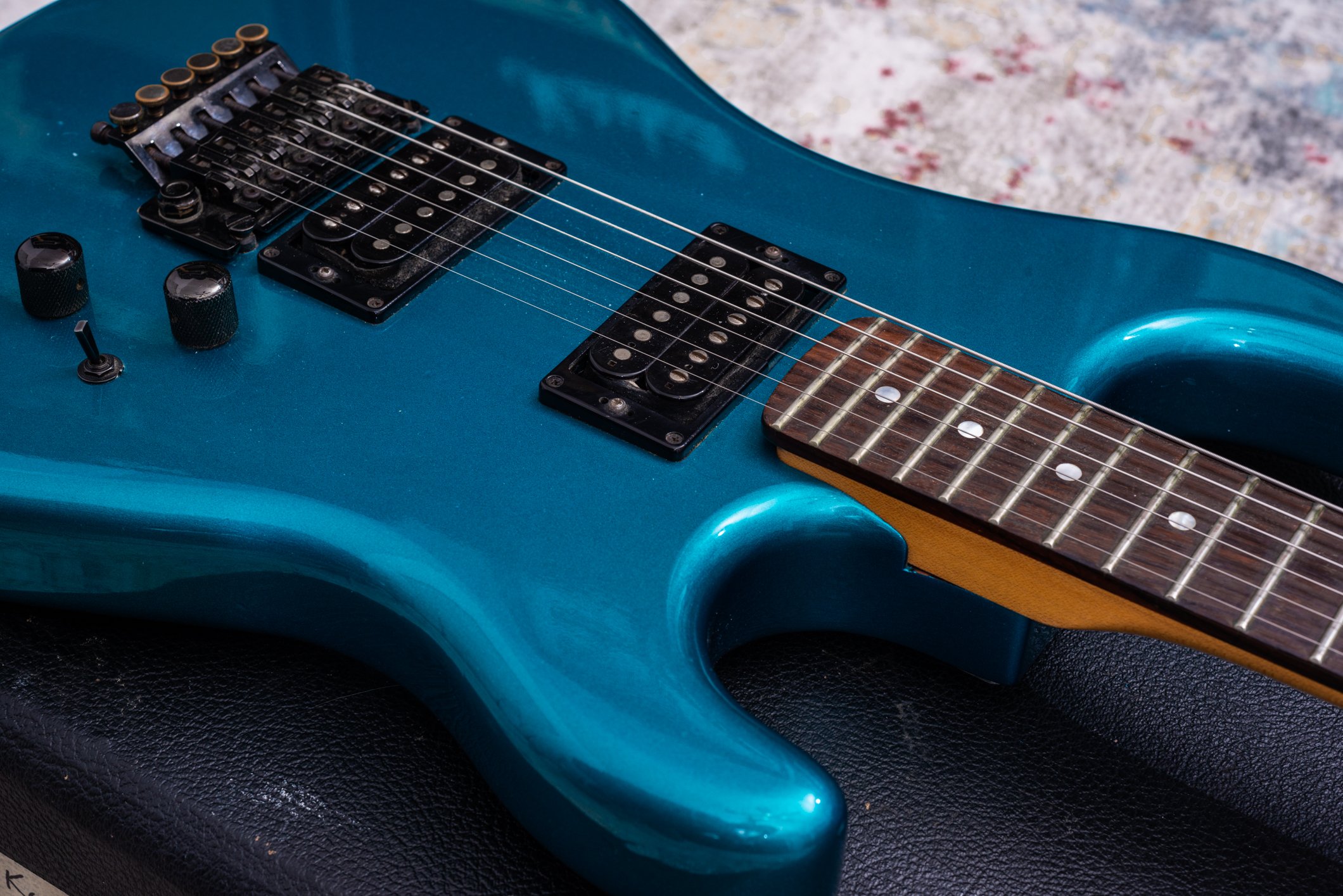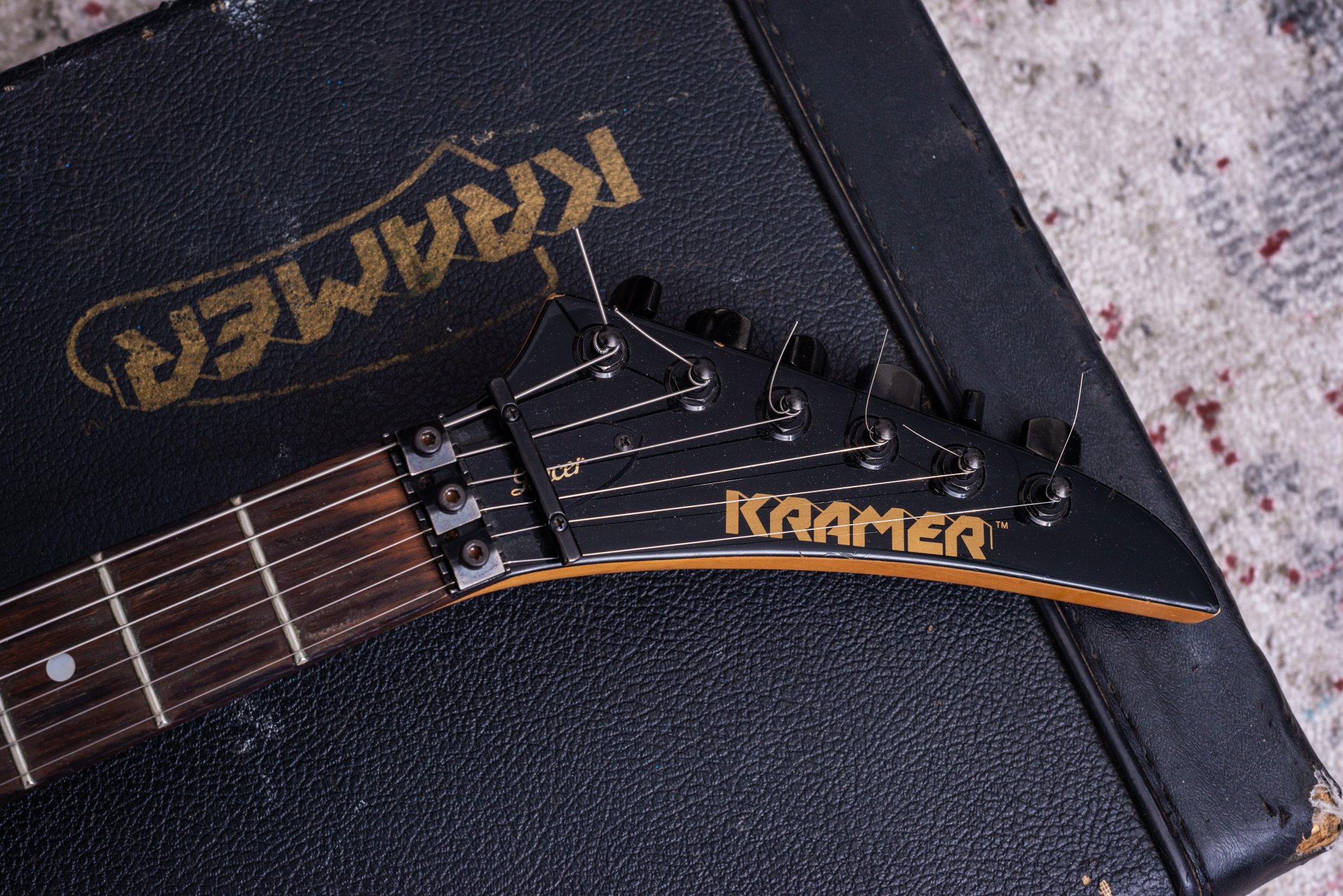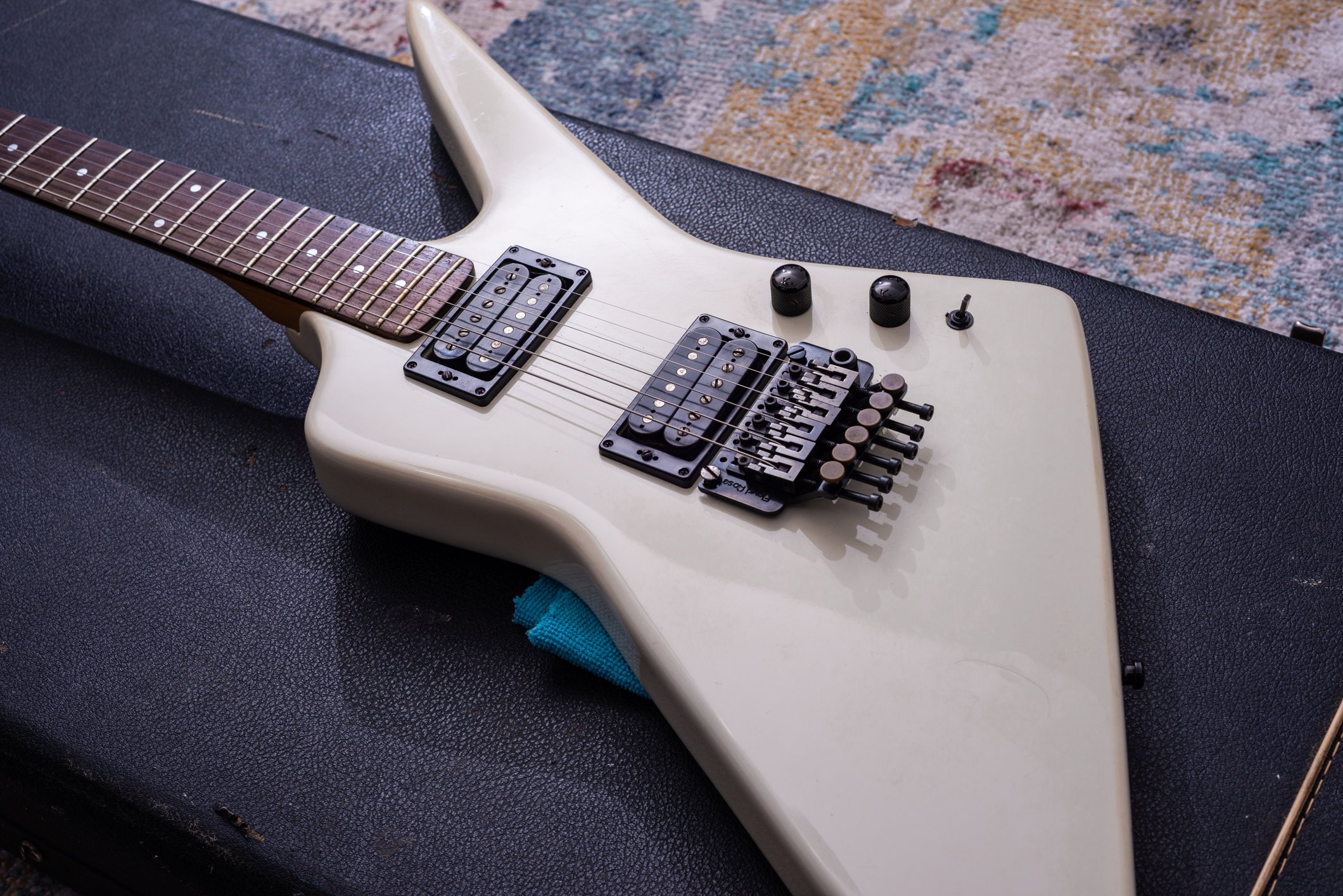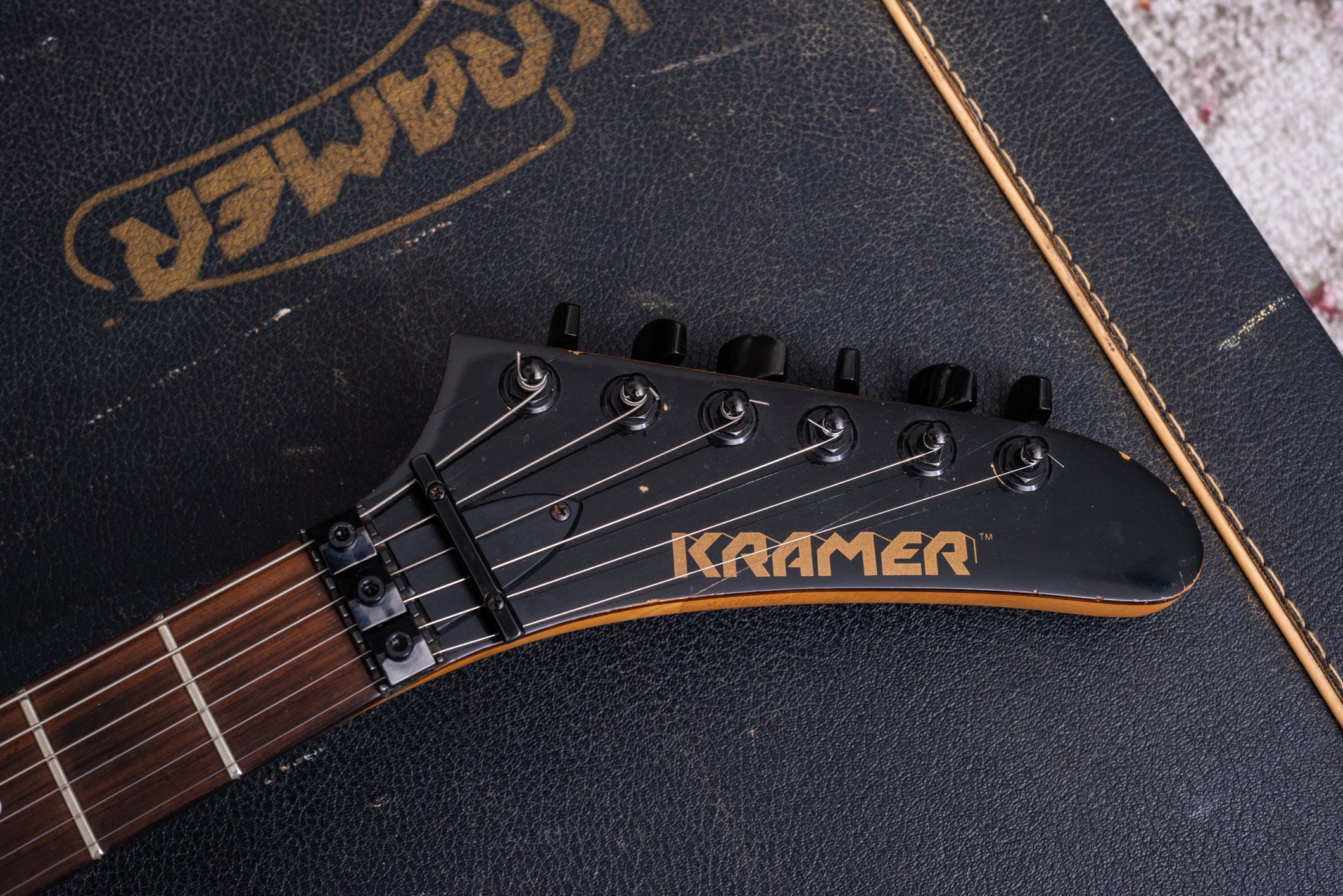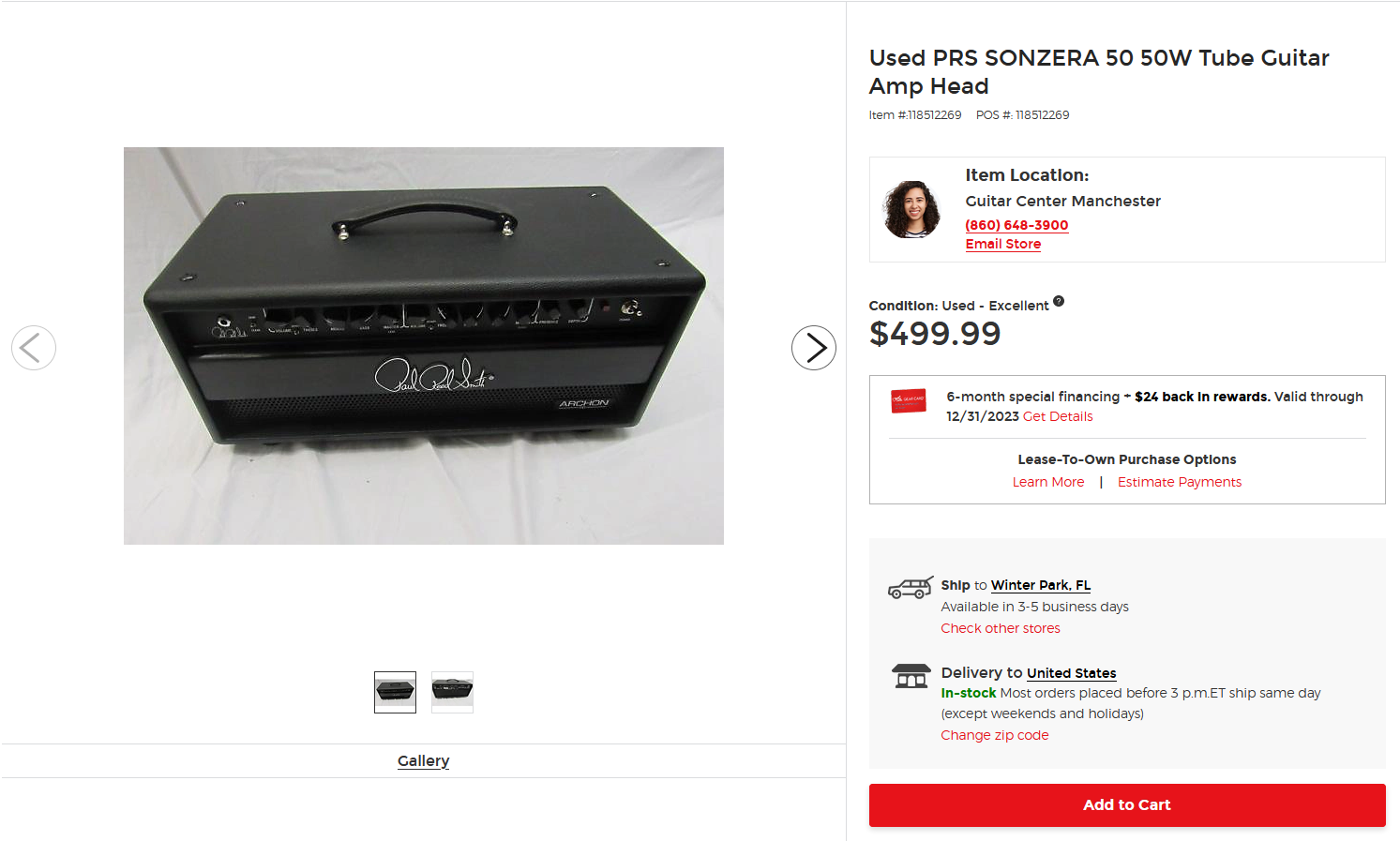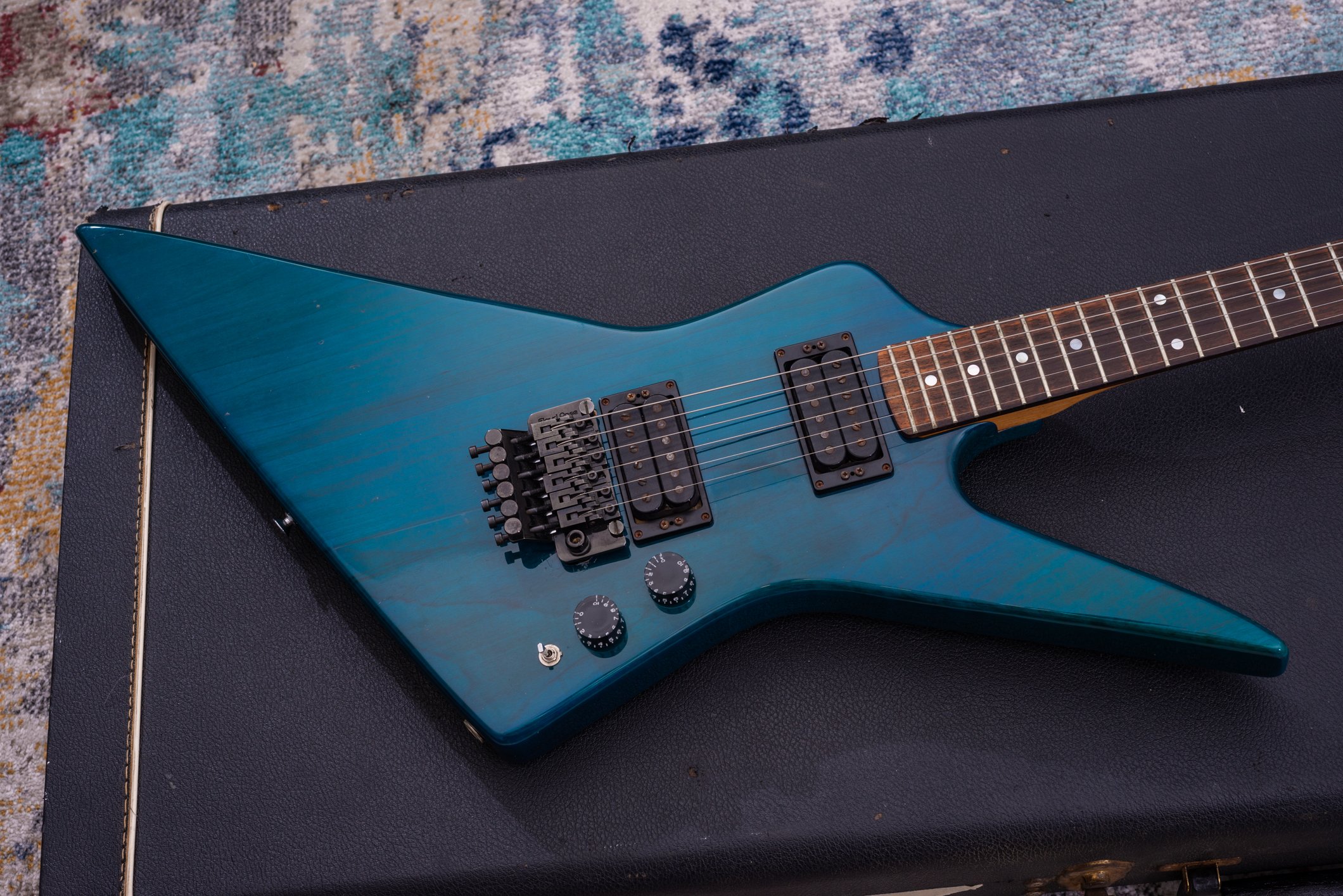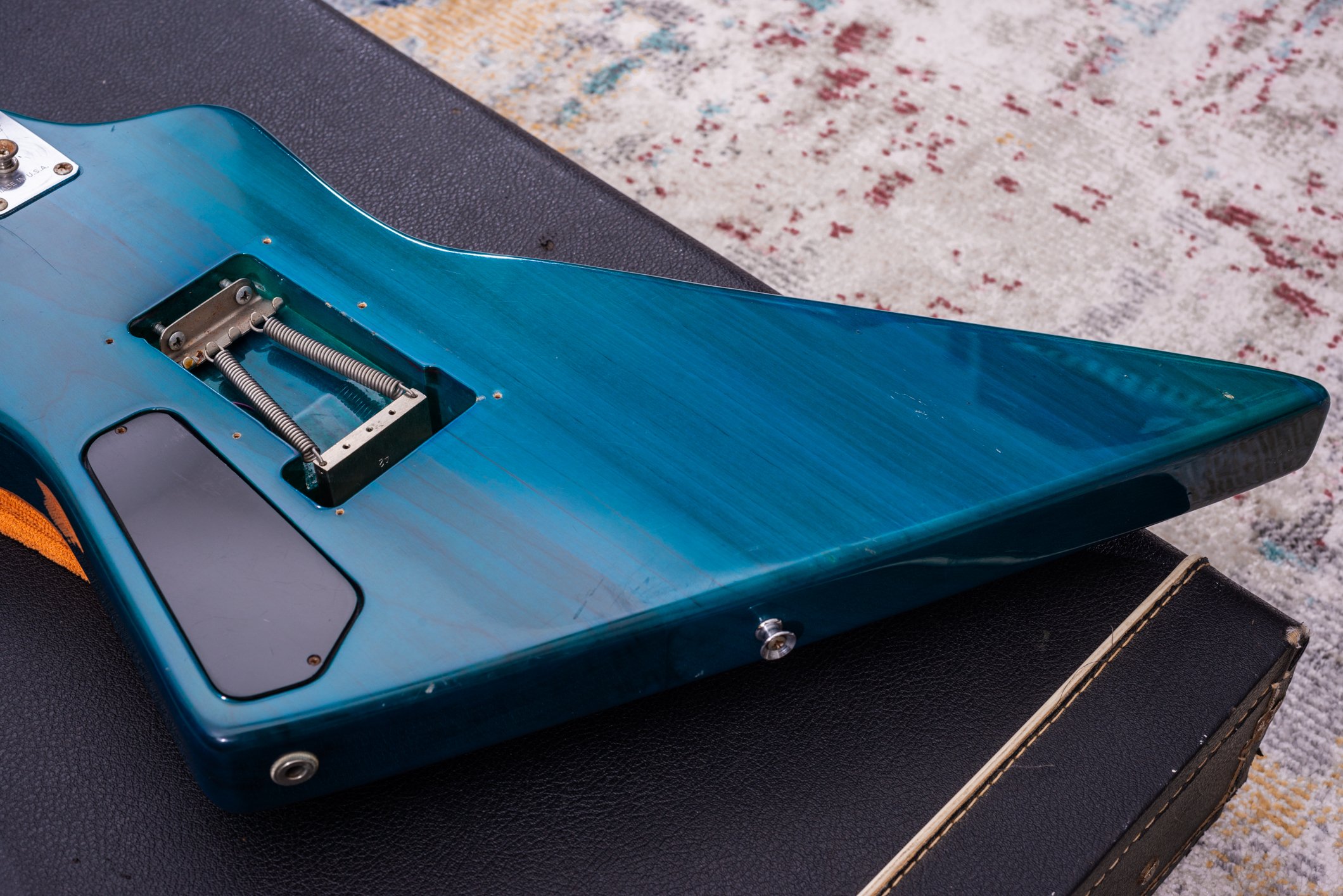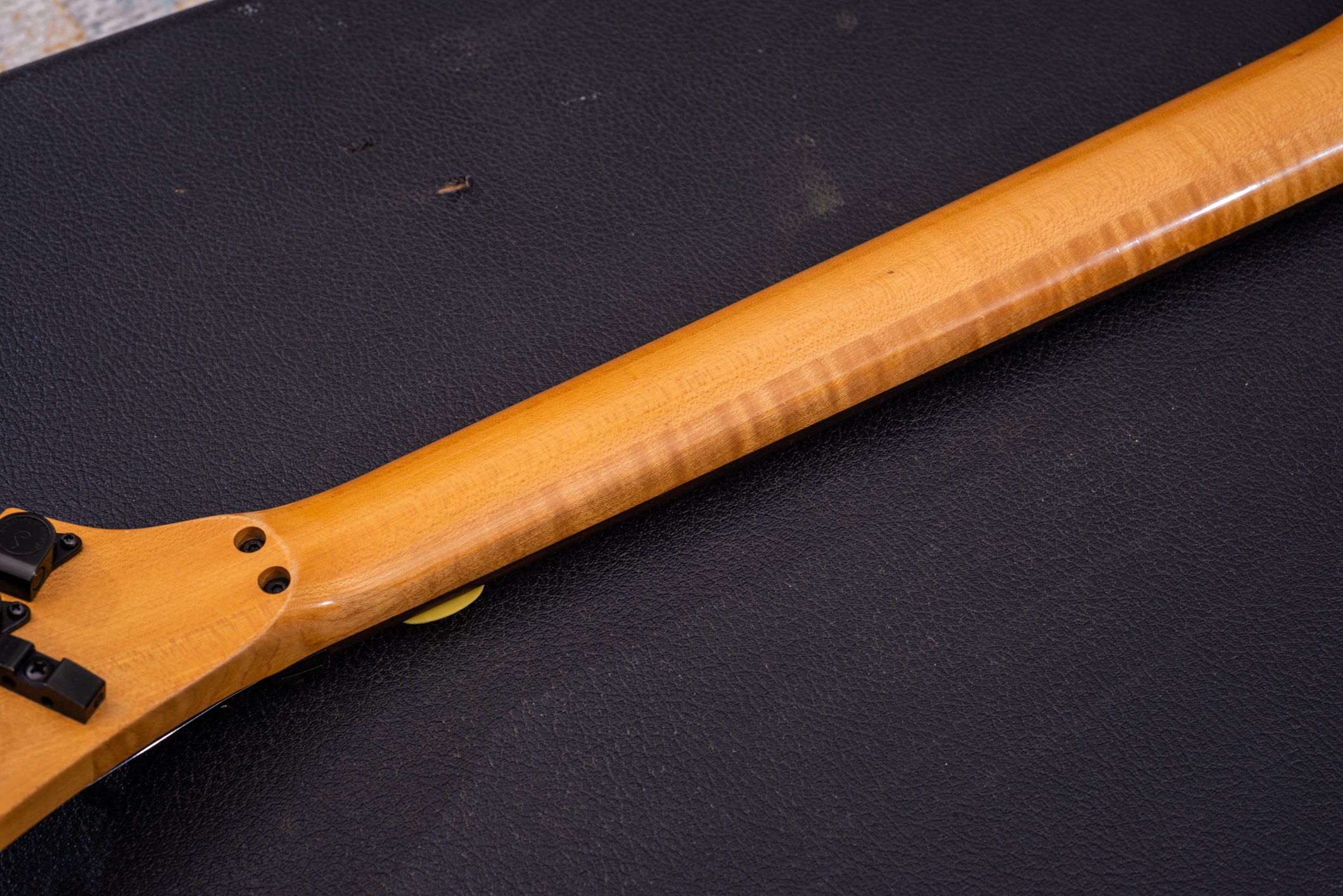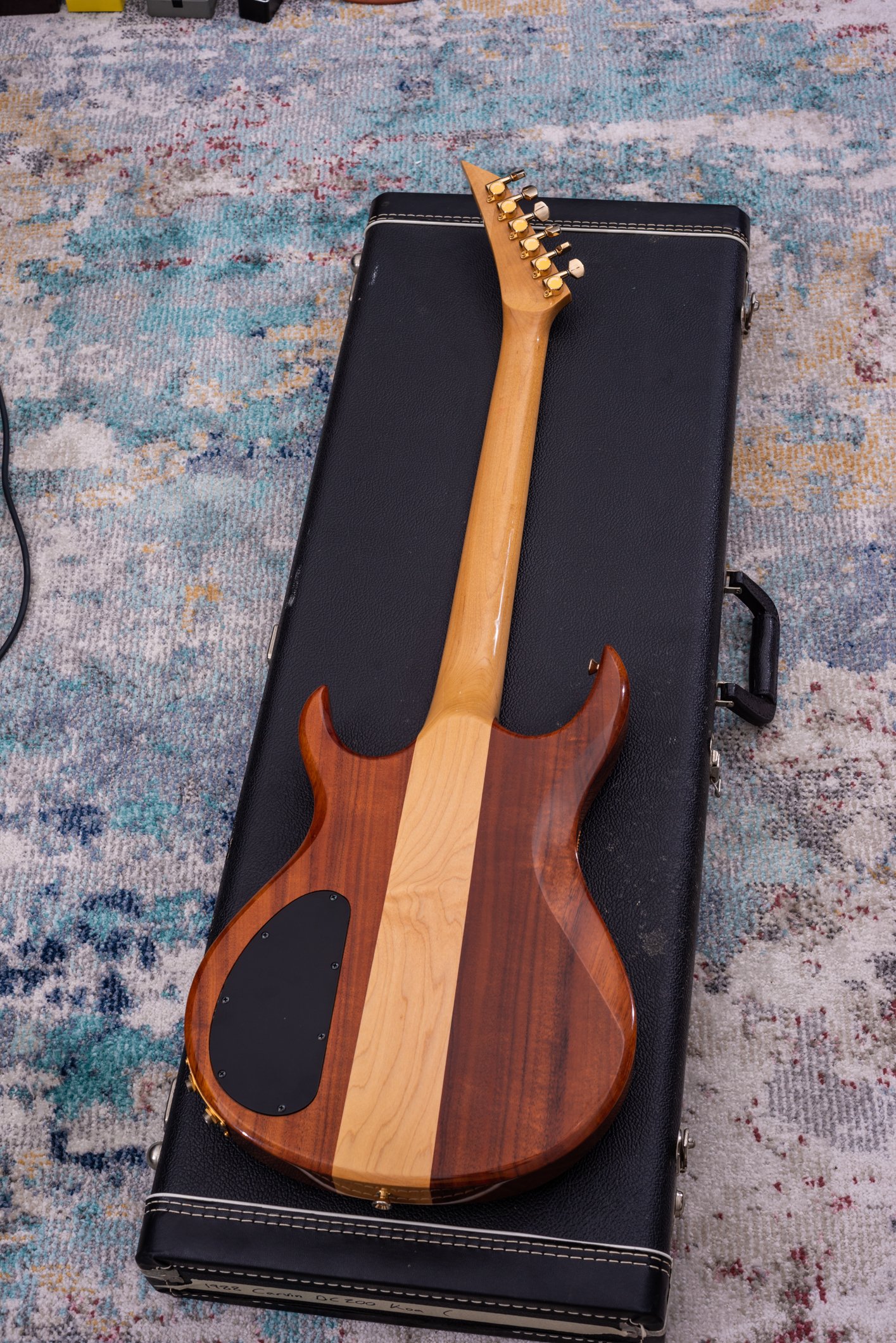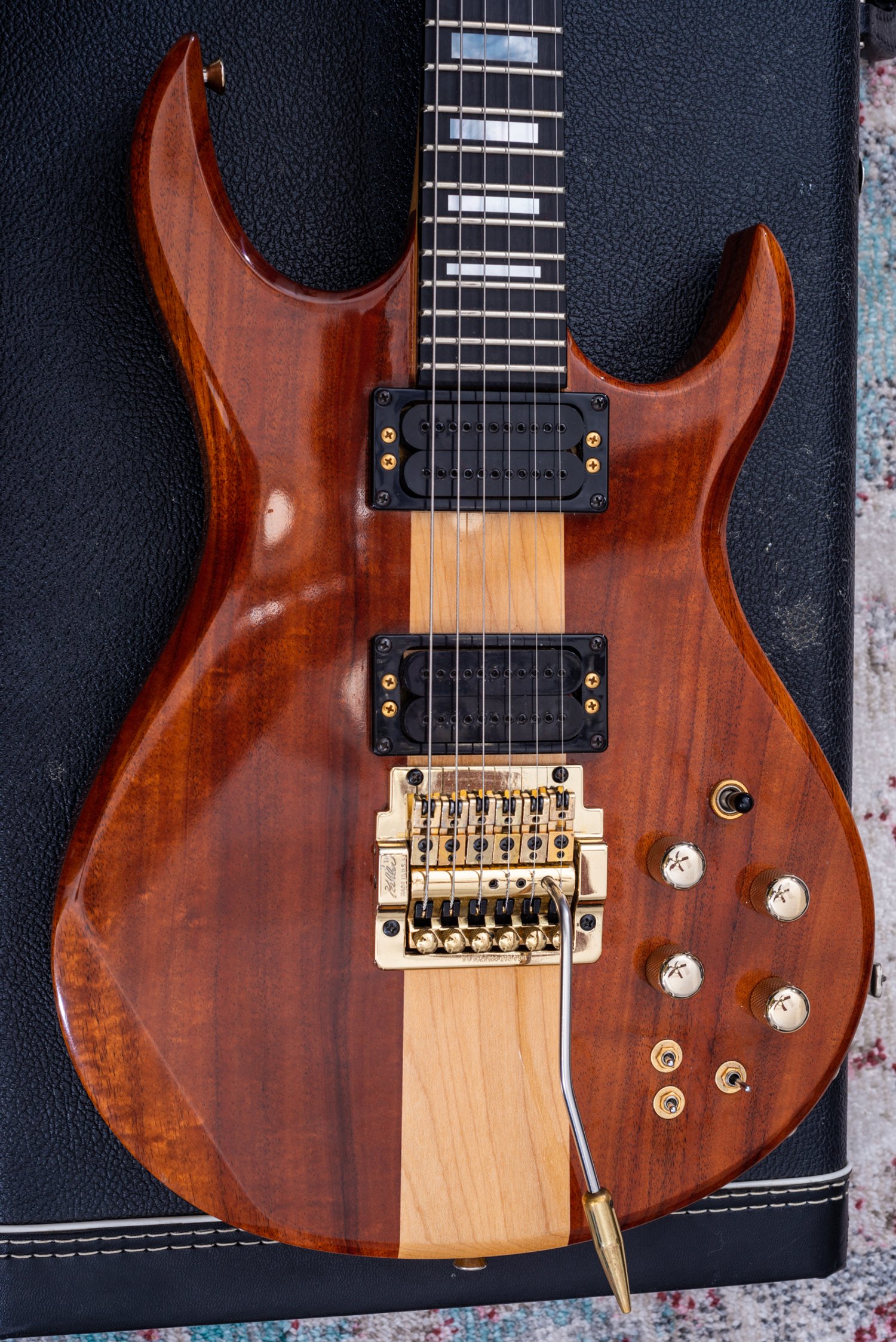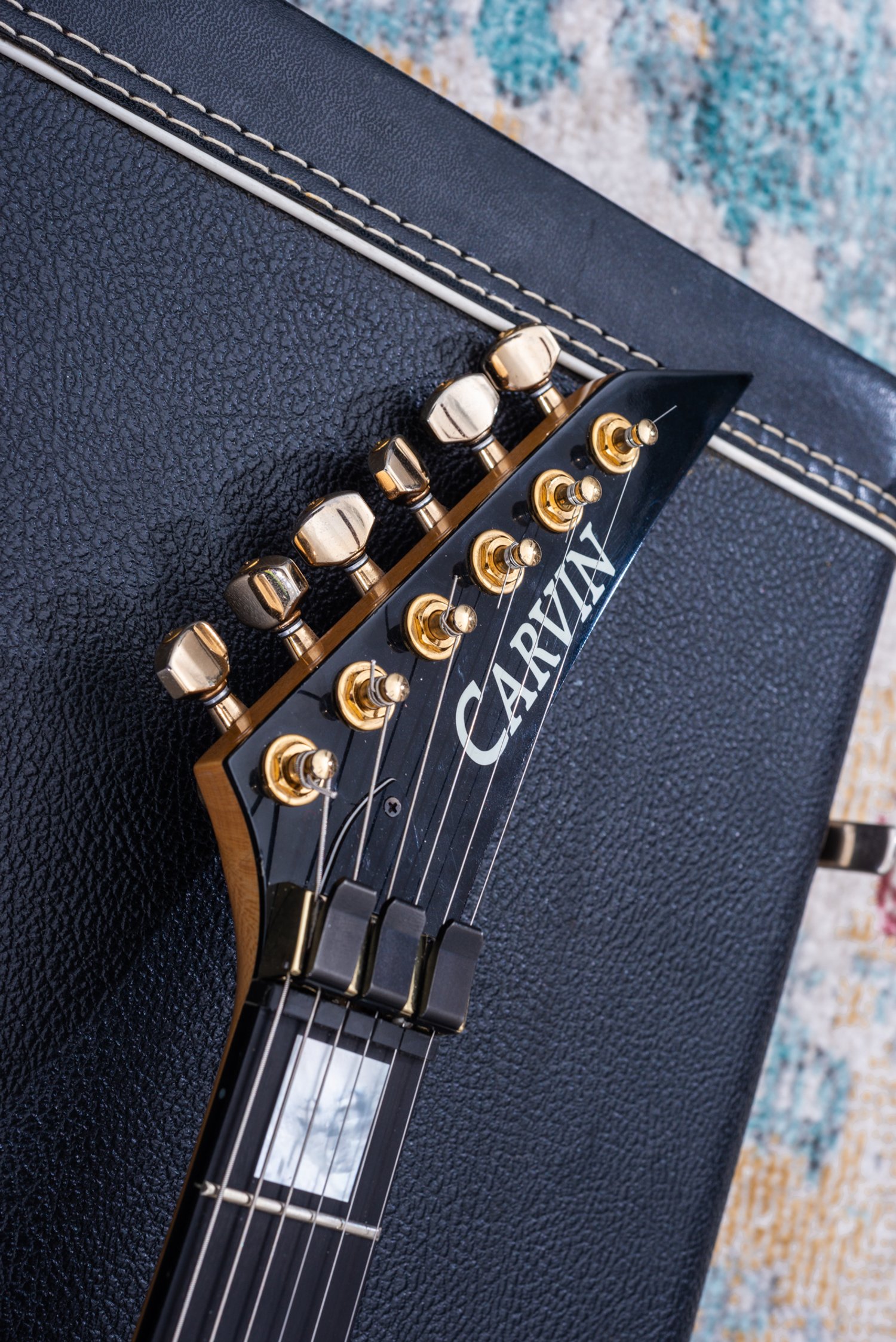I saw this one on ebay and was surprised when there was very little bidding action - I won it for a price I would consider to be far less than expected in this era of Kramer collecting. It’s an authentic Pacer Imperial with the original case and hardware, and while the body does have some minor dents and scratches it is in overall good condition aesthetically and extremely good condition in terms of playability.
The neck is the unique draw here, with a rosewood skunk stipe unlike most pointy headstock Kramers which had the 3-piece maple. This neck was still made by ESP, of course, but it has a more classic rounded shape and is thicker than later pointy necks. The story goes that these necks were originally banana headstock necks (there are quite a few skunk stripe banana necks out there) but had their headstocks shaved down from the factory (either ESP or on arrival to Neptune NJ) to match the new pointy shape the company was going with moving forward. I think this must be true - holding this headstock up very closely to a later pointy and there is a tiny bit of a shape difference, but other later pointies are all very uniform in shape. I have seen these transitional necks both with and without the “American” script after the Kramer logo - this one does not have the script and instead looks more like a standard banana neck logo job. My best guess is that the ones that have the “American” script were re-logoed for varying reasons in Neptune.
I’m not really a big fan of blocked Floyds, but this one is set up dive only, and with the great feeling neck with good frets, it’s quickly become one of my most played guitars since it allows me to quickly swap tunings or use Drop D tunings, and I absolutely adore this color.
